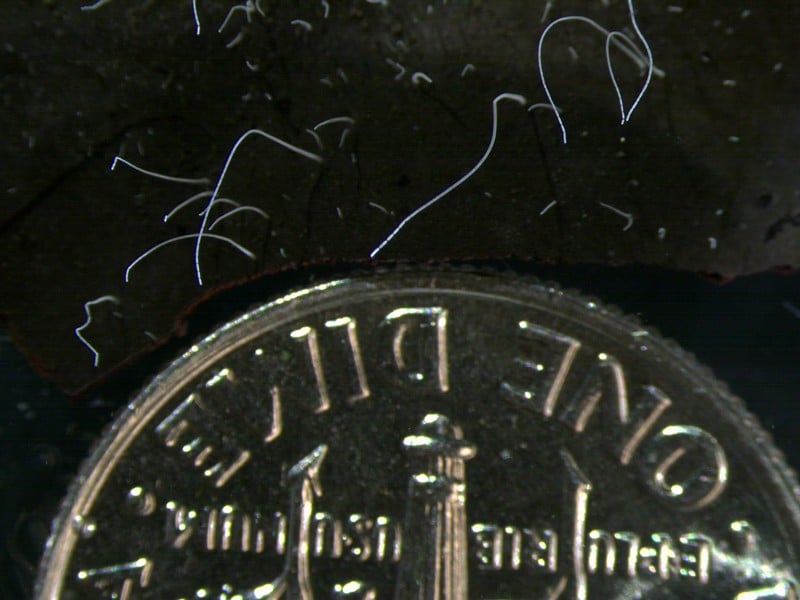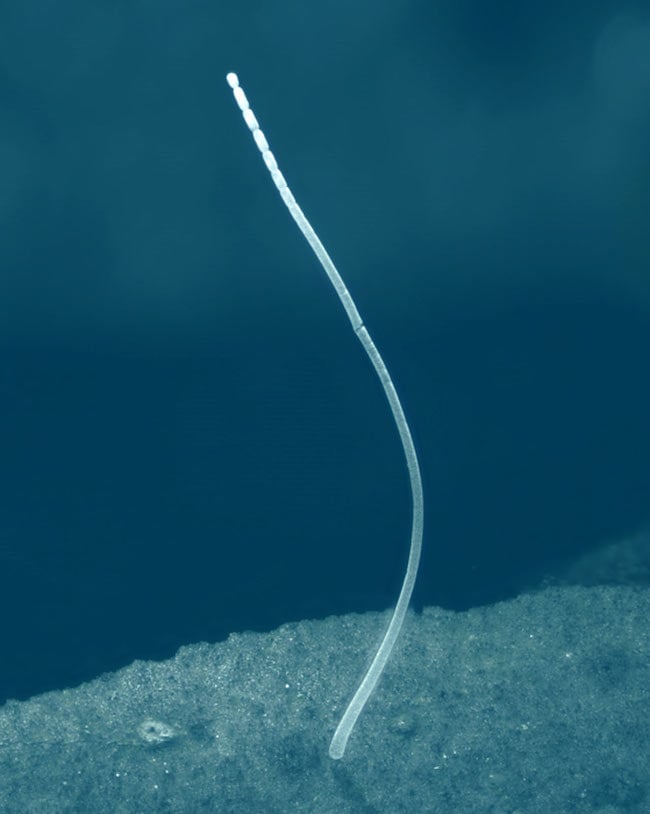
Bacteria can be found almost everywhere on Earth, from the bottom of the ocean to the inside of our intestines. However, the single-celled organisms typically measure a few micrometers and can only be seen through a microscope. Now, researchers have identified a thin, thread-like bacteria species that grows up to 0.4 inches (1 centimeter) long. Named Thiomargarita magnifica, it is the largest bacteria found to date.
"It's 5,000 times bigger than most bacteria. To put it into context, it would be like a human encountering another human as tall as Mount Everest," said study leader Dr. Jean-Marie Volland of the Lawrence Berkeley National Laboratory in California.
Olivier Gros first stumbled upon the massive bacterium in a red mangrove swamp on the Caribbean island of Guadeloupe in 2009. The University of the French Antilles marine biologist says, "I spend a lot of time in the water looking at different things in the mangrove sediments. One time I saw these long white filaments, so I just collected them out of curiosity."

Gros initially believed he had found a new eukaryote species. Unlike bacteria, eukaryotes comprise complex cells containing a nucleus and organelles. However, a closer look at the thread-like specimens revealed he might have found something unique. The scientist suspected the microbe belonged to the same family as the previous largest-known bacteria — the 750-micrometer long Thiomargarita namibiensis (T. namibiensis),or "Sulfur Pearl of Namibia." However, his theory remained unconfirmed until recently, when Dr. Volland and his team decided to conduct more in-depth research.
The scientists found that there is more to the T. magnifica, than its large size. The bacteria, which obtains its energy by oxidizing sulfur, is far more complex than any other previously found species. In other bacteria, DNA floats freely within each cell. But in the T. magnifica the genetic information is stored in hundreds of thousands of tiny little packets known as pepins. Many larger bacteria species carry multiple copies of their genomes. However, the T. magnifica takes it to a new level with 700,000 copies of DNA in its single cell!

The T. magnifica's reproduction method is also unlike any other seen before. Most bacteria reproduce by dividing into two identical cells. However, the slender T. magnifica breaks off a piece of itself at the tip. That segment then separates to become a new member of the species.
Dr. Volland and his team published their findings in the journal Science on June 23, 2022. They plan on conducting further research to determine if mangroves are essential to the bacterium's survival. The researchers also want to further analyze the genetic material inside the bacteria's pepins.
Resources: Nationalgeographic.com, Science.org, Nature.com, jgi.doe.gov
